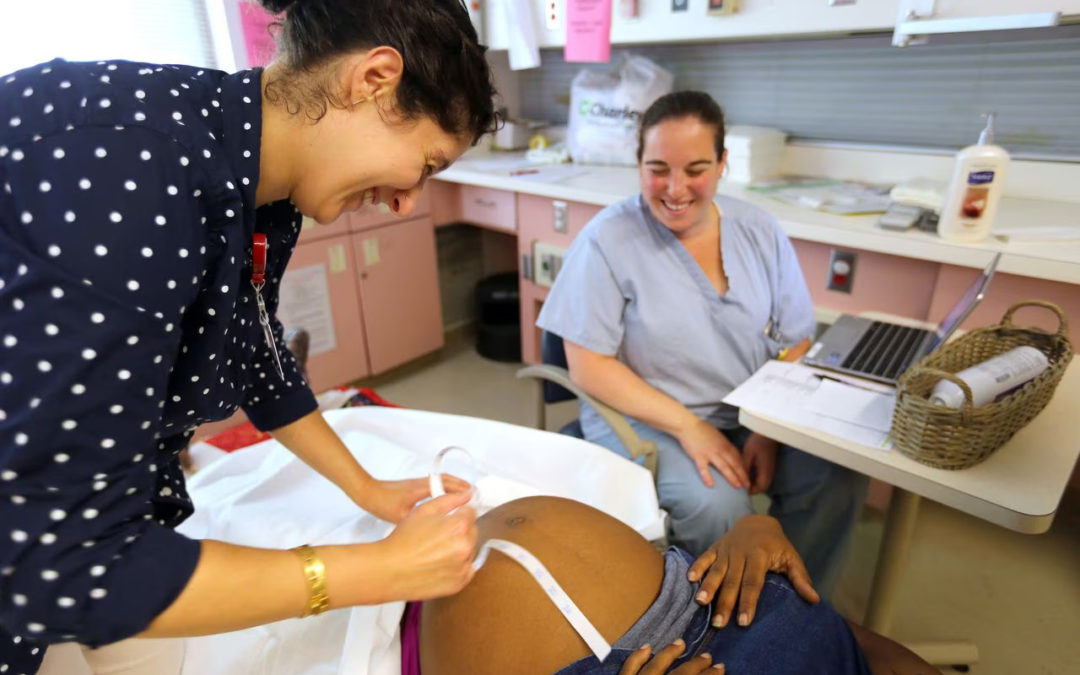CLEVELAND, Ohio – Infant mortality rates continue to decline in Cleveland and Cuyahoga County, but the racial disparities in the statistics remain stark.
In 2021, Black babies in Cleveland were more than twice as likely to die in the first year of their lives as white newborns, according to city records.
The issue of infant mortality has been among the city and county’s most pressing health issues. Overall, the rates of deaths locally and statewide have steadily dropped in recent years. In fact, Cuyahoga County last year had its lowest rate of infant deaths since 2013. The wide racial disparities, however, continue, and it worries health officials for those living in Cleveland’s poorest neighborhoods. But they admit to seeing the gap shrinking.
“I think as long as we continue to hold the system accountable, we will continue to see better outcomes for our families,” said Angela Newman-White, a grants supervisor for the Cuyahoga County Board of Health. “We must make sure that we continue to shift from individual responsibility as the patient to more systems accountability. We keep doing this, and we will improve.”
Infant mortality rates are measured by the number of babies who die before their first birthday, per thousand live births. Last year, the infant mortality rate in Cleveland was 10.5, while Cuyahoga County’s hit 7.4. The last year for complete figures in Ohio was in 2020, and the rate stood at 6.5.
Compare that to 2018, when the infant mortality rate in the city hovered at 12 deaths per 1,000 births. The county’s rate, meanwhile, hit 8.4, while the state’s was 6.9.
For years, health officials have said that preterm birth is the key driver for infant mortality. More than half of infant deaths in Cleveland last year stemmed from prematurity, while 28% resulted from unsafe sleep or suffocation and 16% involved congenital disorders.
Officials have linked the racial disparities in the mortality rates to a number of issues, including access to medical services and economic and social stresses. Health behaviors, such as prenatal care, smoking and drinking, play a role in a mother’s pregnancy, as do housing, transportation, education and employment.
“When we talk about maternal stress, or stress while Mom is carrying, that equals a host of potential health problems that could impact the pregnancy itself and can impact baby at birth,” said Lita Wills, the commissioner of the Division of Health Equity and Social Justice at the Cleveland Department of Public Health.
Studies show that Black women at every socioeconomic level have higher rates of infant death than white women, regardless of class, employment or education. The gap, however, appears to be lessening.
Consider 2018, when the rate of Black babies dying in the county before their first birthdays reached a staggering 15.5 out of 1,000. The rate for white newborns was just 3.8, according to county records. It was even wider in Cleveland: a rate of 17.5 for Black newborns compared to 3 among white babies.
Last year’s statistics in the city offer a different view: The rate of Black infants was 14.4, with white newborns at 6.3. Expecting mothers who participated in MomsFirst, a city initiative that provided support during pregnancies, had a rate of 3.6.
To many, the disparities remain far too wide.
“The numbers do line up to show us that this is an inherent difference in how Black people and white people are treated in health care systems. And what that comes from is how doctors and nurses and practitioners are actually trained,” Wills said.
Take Alana Garrett-Ferguson, who lives in Cleveland’s Hough neighborhood.
She said she struggled during her successful pregnancy and attributed it to racism. She said she was drug-tested multiple times and failed to get adequate answers to her questions. When she sought information, some doctors and nurses simply directed to look at her chart, she said.
“If it wasn’t for my village of friends and family who were able to be there with me during my most vulnerable time, I don’t know how I would have made it out,” said Garrett-Ferguson, a policy associate with Community Solutions, a nonpartisan agency that examines issues affecting Northeast Ohio.
Her neighborhood had among the highest rates of infant mortality in the city.
From 2017 to 2021, its infant mortality rate reached 15 to 20, according to city officials. The Central, Buckeye-Woodhill and Collinwood-Nottingham neighborhoods had the highest rates in the city during that time, 20.1 to 27.
“In Cleveland, we have high concentrations of areas, neighborhoods, where those resources associated with social determinants of health are depleted and we can draw that line right back to redlining, where resources were purposely depleted from communities to invest in other areas, and other neighborhoods deemed more worthy, and more economically stable,” Wills said.
Local and state advocates have created several programs to overcome social risk factors that contribute to infant mortality. They include MomsFirst and First Year Cleveland, a city-county collaborative to reverse the mortality trend. The county has partnered with the Greater Cleveland Regional Transit Authority to provide free weekly bus passes for the entire household for families with women who are pregnant.
There is not a shortage of healthcare providers in Cuyahoga County, but there is a shortage of diverse providers. The county is making efforts to encourage and support young people and college students to pursue careers in the medical field, said Newman-White, of the county health board.
“It is proven that when you go to a physician, if the physician looks like you, you actually have better health outcomes,” she said.

